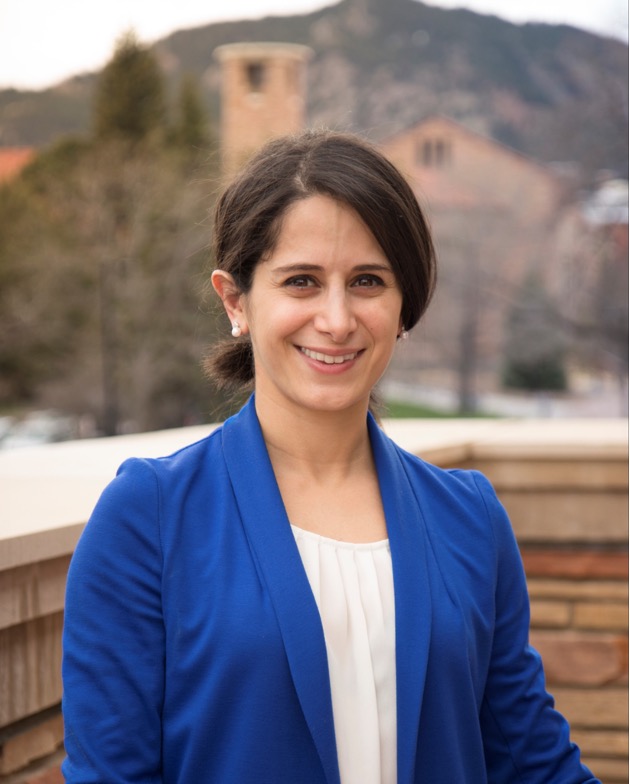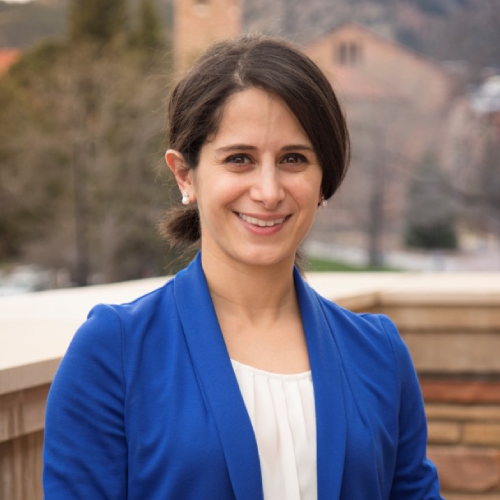

Diba Mani is an Instructional Associate Professor in the Department of Physiology and Kinesiology, in the College of Health and Human Performance at the University of Florida. She is a passionate advocate of virtual exchange in her courses.
Kinesiology, she explains, is the scientific study of human movement, such as biomechanics, motor control, or sports medicine.
Diba teaches a wide variety of courses, including applied physiology for pre-professional medical students, neuromuscular aspects of exercise, and applied sports science, to name but a few.
Internationalizing the sciences
She is constantly seeking ways to bring an international dimension to her sciences classes, particularly to students already overwhelmed by the amount of pre-professional courses they need to do in advance of applying for admission to programs in medicine, dentistry, nursing and others.
She believes that virtual exchange can provide that missing component. Her virtual exchange discussed in our meeting is titled “Internationalization in Neuromuscular Aspects of Exercise”. This experience is implemented in the APK 4115 Neuromuscular Aspects of Exercise course for students pursuing an undergraduate degree in the Applied Physiology & Kinesiology.
Too busy for humanities
“My students already have a lot of assignments. Here it’s mandatory for them to take the degree requirement classes. If they want to go to medical school or dental school, then they have to take all these prerequisites outside of their major, as well. That can mean a lot of chemistry and physics. For these reasons, they may lack time for social sciences, languages, humanities, history, or culture-related classes.
My hope was to bring this international dimension to my science classes by having the students integrate internationalization into the required course – “Neuromuscular Aspects of Exercise.” The way it worked was this: my students were asked to do a research paper review on a relevant course topic. They then presented about the research protocol, science, and how the paper relates to the course content. I thought, why not add an extra dimension where the students interview the author of the research paper, assuming I select the paper and connect the students to the author?
And, that’s how the internationalization component came in the form of a virtual exchange.”
The starting point for the international collaboration
Diba began selecting papers herself, based on authors she knew around the world, and who she knew would be receptive to her students when they reached out to them via email. And she also knew they would agree to have a live conversation with her students in the form of an interview.
“It was a unique space which required a lot of proactive preparation. I already had good relationships with those colleagues, so the groundwork was prepared for my students. I was able to rely on my colleagues to respond and help out. Maybe we’d worked together in the past or I had been a student of theirs. They knew to expect an email from my students once they committed to participating in a given semester.”
Diba arranged the students into small teams of three or four. She typically had about 50 students but sometimes more than 100. Therefore, small teams made it easier for her to manage higher numbers. Each team was assigned one researcher.
How the virtual exchange unfolded
Diba’s students had to explore international aspects of neuromuscular exercise and how research in this field was undertaken in different countries.
“This was what they had to explore and I asked them to ask this question to their researcher and find out more about what steps they needed to take to undertake their research. This would typically have included questions about work place environment and the institutional review board in their country. Here in the US, it’s called the IRB (Institutional Review Board) and is essentially an ethical group that reviews research protocols to ensure they are safe for human subjects.
It turns out that all the countries involved have some kind of ethics board but they just go by a different name.
In this way, my students learned that all countries value the ethics and some of the stereotypes they had in mind were not true. In the end, science is very global. They began to realize that they could make connections with what other countries were researching and link it to their own research.”
A truly international virtual exchange
Countries Diba’s students connected with included Sweden, Saudi Arabia, Iran, Australia, Brazil, Japan, Canada, UK, Italy – all over the globe, essentially.
The selected research paper was the starting point. Then, students had one synchronous meeting with the researcher to do their interview . Whilst setting this up, students needed to understand and appreciate the time zones and respect those of their research counterpart.
“Students had to prepare for their own futures as professionals and understand time zones, how to compile an email correctly with correct salutations. Activities also included networking on professional sites such as LinkedIn. These were all asynchronous activities that were encouraged throughout the period of the virtual exchange.”
At the end, each small team then had to prepare a presentation summarising their findings and connecting it to the internationalization component. This presentation included information about their researcher and the ethical background of the institution that person came from.
Research and cultural differences
“It was surprising and intriguing how there was an actual lack of differences and how similar we are. And this is exactly what we’re trying to promote. I want to encourage them to think about studying abroad after this international experience.
“I know of at least one student who reached out to their researcher in Japan as they became interested in grad school there.
“The differences turned out mostly to be in relation to class set up and grading schemes. So, ultimately, academic differences, rather than cultural ones when it comes to science itself.
As a result of the virtual exchange, my hope is that more will consider travelling abroad in the future. I want them to ‘broaden their horizons’.”
Observations and takeaways in the wake of the VE
“I didn’t realise how important this is for me that they use this virtual exchange experience as a stepping stone for further exploration for travel and study abroad.
“Now that I lead study abroad programmes, I value so much more the connections that my students can make with researchers in a whole array of topics. Therefore, I make it a point to go to different companies when I do my research and when I’m travelling. And I do the same with my students at home. I take them to an equivalent establishment in the US to inspire them.”
“This international VE is my “baby”, and was the first one I did as a faculty member. It was special to connect my students with older researches. But it also happened during COVID-[19], which came with its own set of challenges. After starting in-person, we did this in a hybrid setting and then we went wholly online. Other modifications have been in-person presentations versus virtual presentations, in-person teaching to online teaching, asynchronous presentations versus synchronous.
Challenges and Limitations
“The limitations that I have seen since then is that it takes a lot of work. Because of this, I feel that I need to give my research colleagues abroad a bit of a break before I can ask them to take this on again for me.
But, having said that, this has been the impetus for my passion for internationalisation and globalisation for STEM classes. It’s good for those students who wouldn’t normally think about the international aspect of research or study abroad so now I make sure I integrate some aspect of it in all my course and hope that one day they will come abroad with me and be inspired by the international element.”
